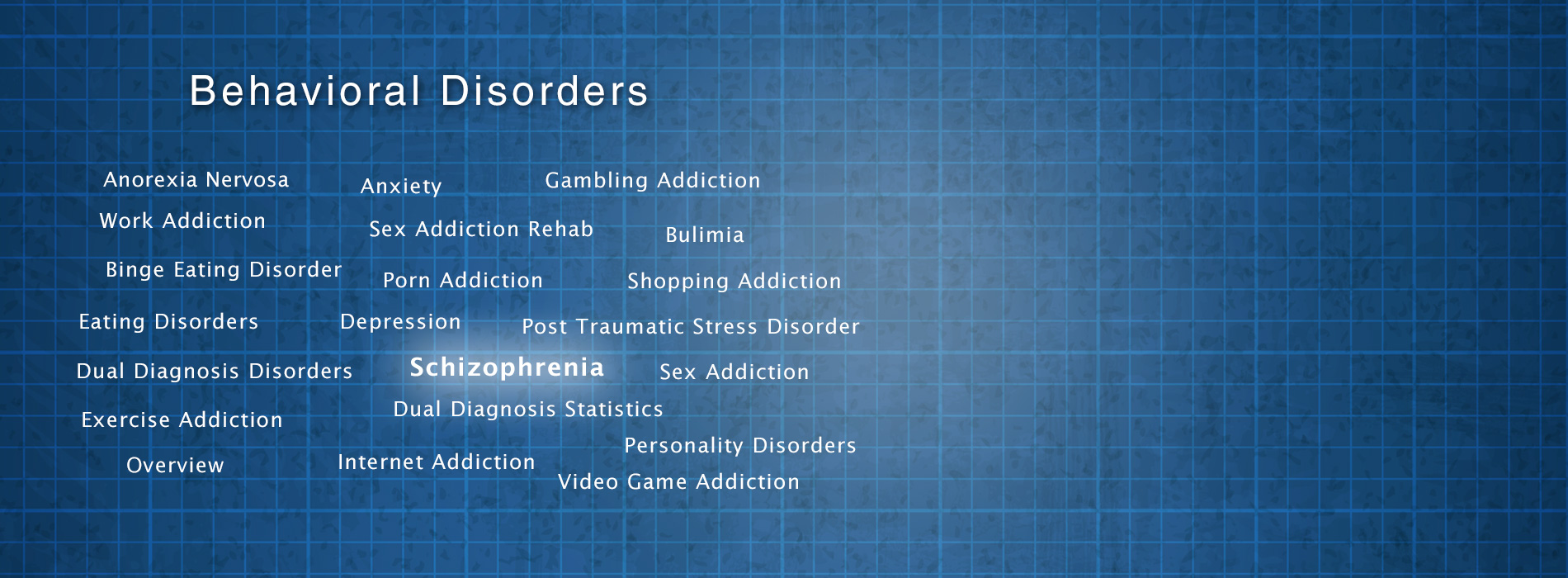Schizophrenia
Schizophrenia is a commonly misunderstood mental disorder. Many confuse it with multiple personality disorder (now called dissociative identity disorder), but it is actually quite different.Schizophrenia is characterized by auditory hallucinations (hearing voices), disorganized speech, and delusions (false beliefs). Each individual can have symptoms that vary wildly from the next. Symptoms are characterized by positive symptoms – symptoms that aren’t exhibited by healthy individuals – and negative symptoms – a deficit of abilities possessed by healthy individuals. There are five subtypes of schizophrenia: paranoid, disorganized, catatonic, undifferentiated, and residual subtypes.
In the paranoid schizophrenia subtype, the delusions and hallucinations of the individual take on a theme of persecution or conspiracy. People with this subtype often believe people are stealing from them or someone is “out to get them”. The topic of their delusions are often consistent throughout the years – for example, believing “the government is trying to frame me for murder.” This is the most common subtype of schizophrenia and can be managed with medication.
The disorganized schizophrenia subtype is characterized by disorganized thoughts. Sufferers often have difficulty with day-to-day life and simple tasks such as bathing, even if they had a firm grasp on the task before onset of the disorder. The emotions of patients with disorganized schizophrenia can appear erratic. They will either show no emotional reaction to a normally emotional situation or over-react to a relatively mundane situation.
Individuals with catatonic schizophrenia show disruptions in normal movement. Their movement often slows to the point of a catatonic stupor. When in this state, they can show very strong resistance to any attempts to move them. Alternately, they could remain in a pose that they are placed in by others for long periods of time. The individual might also go into a state of catatonic excitement, dramatic bursts of energy in which they perform erratic or repeated movements.
The undifferentiated subtype classifies people who exhibit symptoms of schizophrenia, but don’t necessarily fall into one of the other subtypes. Symptoms of people in this subtype could change dramatically over time, which makes them difficult to classify.
The residual subtype of schizophrenia contains people whose symptoms have dramatically decreased in severity. People in this category still exhibit symptoms, but they are much milder in severity and frequency than they have been in the past for the particular individual.
The causes of schizophrenia are unclear, but they are thought to be a combination of environmental and genetic factors. People with schizophrenia exhibit subtle difference in brain chemistry than healthy individuals, but some of these differences can only be measured postmortem.
Anti-psychotic medications are effective at eliminating positive symptoms of schizophrenia. The medications prescribed for a patient are chosen based on cost, risk factors, and effectiveness. Some risk factors might be higher for certain individuals based on their age or previous medical history. Many people with schizophrenia are unable to comply with regular medication regimens, so long-acting injections are available to be administered through their doctor’s office on a monthly basis. People going through severe schizophrenic episodes are hospitalized for the safety of themselves and others.

